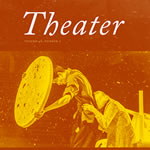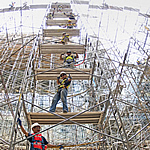Most of us have been admonished from an early age to “think before you speak.” But it turns out that speaking doesn’t work that way. Studies in psycholinguistics (Smith and Wheeldon 1999, for example) suggest that humans routinely dive into spoken sentences without a plan for how they will end. We do some basic preprocessing […]
Four Forms of Inquiry
In my last post, I shared four forms of speech (Torbert et al) that define a richer and clearer palette of conversation in meetings (or in life). The two I find most absent or abused in purposeful conversation are inquiring and framing. So I wanted to dig into each of them in turn.
The Four Parts of (Meeting) Speech
With a new academic year now begun, I’m noticing again how odd and awful meetings can be. People of strong intellect and good intent, when gathered over an agenda (or a lack thereof), so often get lost in weeds and hand-wringing. Words are spoken. Heads are nodded. And you leave the meeting without knowing what […]
Beware the volunteer sentence
It can be comforting when a solution or a path presents itself to you as the obvious choice. When you feel comfortable moving to the next problem or question without even thinking much about the one at hand. Problem is, if you’re crafting something extraordinary, that obvious, unconsidered choice can also be damaging. It’s often […]
Noticing before knowing
My favorite books about writing are really books about thinking, and crafting those thoughts into powerful, public form. So, whenever I’m in a thinking thicket — as I was for the development and delivery of my aesthetics/entrepreneurship course this past semester, “The Art of the Arts Venture” — I look for insight in books about […]
Shock and ‘Eh’
I’ve been to enough ‘creative economy’ presentations to know how they generally flow: They draw a big circle and then flash a big number. The big circle includes lots of creative industries — from nonprofit to full-on-profit. The big number comes from their aggregated economic activity. The message is, essentially: Holy cow, we’re big. Therefore […]
Cultural strategies, structures, and subtexts
Theater journal has just published my review of Peter Frumkin and Ana Kolendo’s book on cultural construction projects: Building for the Arts: The Strategic Design of Cultural Facilities (University of Chicago Press: 2014). Here’s the opening excerpt. The full review is available for download (pdf format).
The platform problem
Apple, Inc. has done a(nother) clever thing. In the midst of helping its customers succeed in individual goals through its iPhone and iOS systems, the company has also built resources to help groups and individuals succeed in working with each other. The App Store and iTunes are the most obvious examples. But the company has […]
The dominant problem
Most of us would admit that our work comprises a complex bundle of interconnected problems. Each day we attack the particular problems in front of us (or the problems that pop up or pop into our workspace). And each day, we’re aware that there are more problems than we can actually solve.
Emerging, emergent, emerged?
One of the best arts conferences I attend each year is only steps away from my office door. This is convenient, and also completely awesome. The Emerging Arts Leaders Symposium, which will be held on Sunday, March 6, is planned and presented entirely by American University’s Arts Management students. And it rocks. If you are […]











